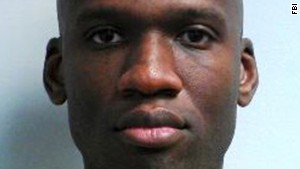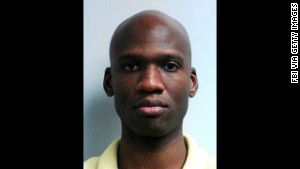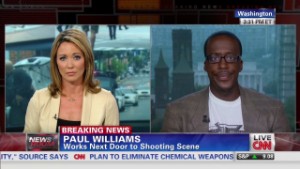Editor's note: Joseph Trevithick is a research associate at GlobalSecurity.org, an organization that follows defense and security issues. He has provided expert commentary on various defense and security issues, including terrorist attacks, to various media outlets domestically and internationally. He has also written and otherwise contributed to a number of original published works on defense and security topics.
(CNN) -- While significant details about the mass shooting at the Washington Navy Yard on Monday remain obscure, as with every such incident, the first question that people want answered is this: Could something have been done to save those innocent lives?
Unfortunately, terrorism and similar acts of violence are bound only by the creativity of those responsible. The burden is always on those tasked with protecting us to prepare for such events. Some categories of attack are easier to prepare for than others.
Major truck bombing incidents, for example, such as the bombing of the Marine Corps barracks in Beirut, Lebanon, in 1983 or the Alfred P. Murrah Federal Building in Oklahoma City in 1995, prompted significant changes in the security landscape.
Identifying the victims
 Joseph Trevithick
Joseph Trevithick This was because a truck bomb could be whittled down into a distinct and useful set of parameters. How big would a truck likely be? How close would it have to be to the building to be dangerous? What sort of security measures would be most difficult to defeat for a determined driver?
Similarly, the greater the number of people involved in a conspiracy, the more difficult it is to conceal. Once more than one person is involved, the chances of discovery go up exponentially. In the past few years, Americans have seen many potential terrorist plots foiled because of the work of undercover operations.
With the help of controversial surveillance programs initiated after the events of September 11, 2001, federal law enforcement agencies have been able to rapidly pounce on anyone who has shown the slightest indication of committing such an attack. Undercover law enforcement agents have even been the ones providing fake explosive devices in some instances.
An individual seeking the counsel or assistance of others in preparation for an attack can be fit into a scenario or reasonable set of scenarios that law enforcement can guard against with a relatively high degree of certainty. But lone wolf attackers -- and it is not yet clear if that is the case in the Navy Yard siege -- are less easy to pigeonhole. For instance, they generally use individual firearms, which are readily concealable, rather than large explosive devices or more exotic weapons, such as man-portable rockets and missiles, or weapons of mass destruction.
 Navy Yard shooting suspect dead
Navy Yard shooting suspect dead  Friend of Navy gunman speaks to CNN
Friend of Navy gunman speaks to CNN  Witness: 'I heard four rapid bangs'
Witness: 'I heard four rapid bangs' More importantly, studies have consistently shown that there is no single dispositional profile for individuals who commit lone wolf attacks. If anything, the unifying factor is that the people who commit these crimes are driven to do so by a complicated combination of personal ideology, grievances and other individual factors.
These often hyperspecific details, as well as the subject's isolation, make it difficult, if not impossible, to protect against them as a category of potential attackers. It would be unreasonable to attempt to tailor proactive security measures to the infinite number of detailed scenarios that could occur. What this has meant is that much of what has been developed in response to what are now being referred to as "active shooter" scenarios is reactive rather than proactive.
What is security like at the Navy Yard?
A number of these responses were seen in the September 16 attack in Washington: The rapid response of law enforcement (including helicopters with airborne cameras), use of social media to quickly distribute warning messages and other information to civilians and the lockdown of the area in question (including adjacent facilities).
Of course, many questions as to how the attacker, or attackers, entered the Washington Navy Yard initially remain unanswered.
As the details of this incident come out, there may be operational changes required so that even those with valid identification badges -- already obtained through a lengthy security clearance process -- will have to receive further security scrutiny.
The level of scrutiny that could be applied regularly on a daily basis, also taking into account privacy concerns, might prove to outweigh the security provided against this nebulous and generally limited set of attackers.
Would the employees be willing to submit themselves to airport style security checks? Multiple times? Would they be willing to have their car visibly searched or even partially dismantled without probable cause? Regardless of what measures are taken, they will also not necessarily deter 100% of such attackers.
Those who commit acts of violence are unfortunately only bound by their resourcefulness. It becomes the unpleasant job of those who protect us against such violence to balance our security against a reasonable expectation of what can and cannot be prevented.
While details of this attack might shine light on things that can and should have been reasonably done, it is just as likely that they will shine light on the sad fact that it is simply impossible to prevent these tragedies all the time, no matter how hard we try.
Follow @CNNOpinion on Twitter.
Join us at Facebook/CNNOpinion.
{ 0 comments... read them below or add one }
Post a Comment